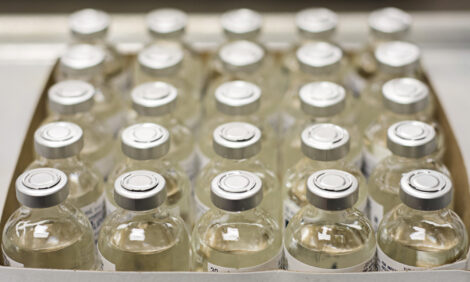



Indian Chicken Output Growing at Nine Per Cent Annually
ANALYSIS - With three billion broilers production annually, India chicken production is currently growing at a rate of nine per cent compound annual growth rate (CAGR) and table egg production is growing at eight per cent, G.B. Sundararajan, managing director of Suguna Foods Limited, said recently.India is the fifth largest country in poultry production with a US$10-billion market.
Speaking at the 56th national symposium 2014 in Kochi organized by CLFMA of India, Sundararajan said, Indian table egg production is at 54 billion per annum and has a per-capita egg consumption of 54 eggs, which is below the world’s average of 128 eggs.
In India, 70 per cent of production is through integrated operations and 30 per cent is from individual farmers.
Making a presentation on opportunities in the poultry sector, Mr Sundararajan said the growing population and expansion of the middle class as well as overall preference for poultry meat compared to other meats are the major opportunities in the sector today.
India’s strong economic growth is increasing consumers’ incomes, and it is estimated that by 2025, India will have 583 million people living on incomes of above $4,380.
On challenges in the sector, Mr Sundararajan said, there is a strong push from foreign countries to push their chicken into India. However, by dumping their leg quarters in India, foreign countries will only destroy the Indian industry.
Mr Sundarajan also took on the government for not permitting genetically modified (GM) soya for feed. Whereas countries like the US and Brazil have their soya as a GM crop, giving them a huge cost advantage.
The US does not export whole chickens. They use nutritious breast meat for local consumption and export by-products like leg quarters at less than 50 cents in India, the presenter said.
The US produces GM crops which are not allowed in India, and the agri-ndustry is heavily subsidisd. Imports from US are impacting local industry and affecting rural communities, he added.
Speaking on antibiotics in poultry feed, Mr Sundararajan said with some adverse news on chicken with respect to antibiotics and other myths, the industry should have a proactive action plan to defend and build trust among consumers.
The levels of antibiotic residues in our chicken is far below the maximum residue levels prescribed by the European Union and the US, which are the most stringent in the world, Mr Sundararajan stressed.
The industry should commit to use antibiotics very judiciously and according to the veterinarian's recommendation.
India exports chicken to Europe, the Middle East, and Japan – countries having strict standards for food safety, which reaffirms Indian safety practices to the global community. Food safety is high on the agenda of both consumers and government.
Mr Sundararajan also said there continues to be a rise in feed costs and other key inputs, which remains a challenge for the industry.
Feed constitutes 70 per cent of the production cost and is growing faster than egg or chicken prices. Advancement in feed formulations and reduction in FCR will be long-term goals to make the industry sustainable along with other input costs like power and labor that are also increasing.
Improvements in farming techniques and innovations in process will help in cost reduction as well. Industry should collectively work on advancements on these fronts.
Speaking on emergence and re-emergence of poultry diseases, Mr Sundararajan said, challenges in animal health management are a priority area. Effective vaccinations and preventive methods need to be continuously evolved through R&D by the industry.
On demand creation and promotion of the sector, Mr Sundararajan said the increase of per-capita consumption of chicken through sustained demand creation programs by the industry will make the industry healthy for the future.
The industry needs to promote health benefits of chicken and increase availability of chicken at home. Our goal should be to make every freezer compartment in a refrigerator at home a place to stock chicken, he said.
Availability of chicken at home will build frequency in consumption. The industry needs to take on educating consumers about safe storage practices.
Speaking on taxes in Kerala state, Mr Sundararajan said, only Kerala state tax on chicken is at a rate of 14.5 per cent, and consumers are forced to pay around INR40 ($0.51) additional for a kilo of chicken. This is impacts consumption of protein and the sector in the state. Other meats like fish or beef are not taxed in Kerala.
In his presentation, Mr Sundararajan said the industry should have a focus area, which includes safeguarding the industry against negative news about chicken which could affect consumption; continuous improvement in farm practices and development in formulations to lower cost of production; foods safety and hygiene standards need to be addressed; and work with government agencies to get rightful status for the industry.
Tamil Nadu-based, Suguna Foods Limited is the biggest broiler production in the country and 12th largest poultry enterprise in the world. With an annual turnover of $820 million, it produces 360 million chickens per annum and 2.2 million tonnes of feed.
The company hatchery produces 14 million egg sets per week and has a capacity to produce 21,000 tonnes of processed chicken meat per annum.








